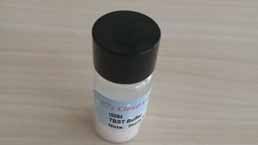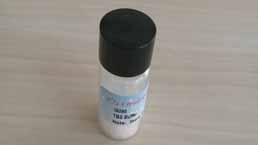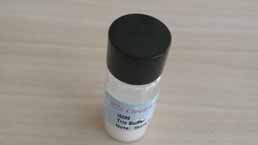Monoclonal Antibody to Thrombin/Antithrombin Complex (TAT) 

- UOM
- FOB US$ 197.00 US$ 459.00 US$ 655.00 US$ 1,638.00 US$ 6,550.00
- Quantity
Overview
Properties
- Product No.MAA831Hu23
- Organism SpeciesHomo sapiens (Human) Same name, Different species.
- ApplicationsWB; IHC; ICC; IP.
If the antibody is used in flow cytometry, please check FCM antibodies.
Research use only - DownloadInstruction Manual
- CategorySignal transductionEnzyme & KinaseMetabolic pathwayHematology
- SourceMonoclonal antibody preparation, Host Mouse
- Ig Isotype IgG1 Kappa, Clone Number C7
- PurificationProtein A + Protein G affinity chromatography
- LabelNone
- Immunogen RPA831Hu01-Recombinant Thrombin/Antithrombin Complex (TAT)
- Buffer Formulation0.01M PBS, pH7.4, containing 0.05% Proclin-300, 50% glycerol.
- TraitsLiquid, Concentration 1mg/ml
Sign into your account
Share a new citation as an author
Upload your experimental result
Review

Contact us
Please fill in the blank.
Specifity
The antibody is a mouse monoclonal antibody raised against TAT. It has been selected for its ability to recognize TAT in immunohistochemical staining and western blotting.
Usage
Western blotting: 0.5-2µg/mL;
Immunohistochemistry: 5-20µg/mL;
Immunocytochemistry: 5-20µg/mL;
Optimal working dilutions must be determined by end user.
Storage
Store at 4°C for frequent use. Stored at -20°C in a manual defrost freezer for two year without detectable loss of activity. Avoid repeated freeze-thaw cycles.
Stability
The thermal stability is described by the loss rate. The loss rate was determined by accelerated thermal degradation test, that is, incubate the protein at 37°C for 48h, and no obvious degradation and precipitation were observed. The loss rate is less than 5% within the expiration date under appropriate storage condition.
Giveaways
Increment services
Citations
- Genetic repression of mouse VEGF expression regulates coagulation cascade.PubMed: 21086498
- Treatment with unfractionated heparin attenuates coagulation and inflammation in endotoxemic miceScienceDirect: S0049384811004166
- High sCD40L levels early after trauma are associated with enhanced shock, sympathoadrenal activation, tissue and endothelial damage, coagulopathy and mortalityWiley: source
- Tissue factor and PAR1 promote microbiota-induced intestinal vascular remodellingNature: 20120329
- Prolonged Exposure to Sphingosine 1–Phosphate Receptor-1 Agonists Exacerbates Vascular Leak, Fibrosis, and Mortality after Lung InjuryPubMed: PMC2993087
- Host Defense Peptides of Thrombin Modulate Inflammation and Coagulation in Endotoxin-Mediated Shock and Pseudomonas aeruginosa SepsisPubMed: PMC3521733
- Clinical impact of factor V Leiden, prothrombin G20210A, and MTHFR C677T mutations among sickle cell disease patients of Central IndiaPubmed: 23992124
- Selected hemostatic parameters in patients with pancreatic tumors.Pubmed:Pmc4297344
- TFPI1 Mediates Resistance to Doxorubicin in Breast Cancer Cells by Inducing a Hypoxic-Like ResponsePubmed:24489651
- Novel evidence that crosstalk between the complement, coagulation and fibrinolysis proteolytic cascades is involved in mobilization of hematopoietic stem/progenitor cells (HSPCs)Pubmed:24667943
- Thrombomodulin Improved Liver Injury, Coagulopathy, and Mortality in an Experimental Heatstroke Model in MicePubmed:24781566
- Evidence of a Pivotal Role for the Distal Part of the Complement Cascade in the Diurnal Release of Hematopoietic Stem Cells Into Peripheral BloodPubmed:26087465
- (S)YS-51, a novel isoquinoline alkaloid, attenuates obesity-associated non-alcoholic fatty liver disease in mice by suppressing lipogenesis, inflammation and coaCavia (Guinea pig )lationPubmed:27343380
- Coagulation factor XI vaccination: an alternative strategy to prevent thrombosis.pubmed:27813324
- Nebulized Heparin Attenuates Pulmonary Coagulopathy and Inflammation through Alveolar Macrophages in a Rat Model of Acute Lung Injurypubmed:29202212
- Platelet-localized FXI promotes a vascular coagulation-inflammatory circuit in arterial hypertensionpubmed:28148841
- Activated TAFI Promotes the Development of Chronic Thromboembolic Pulmonary Hypertension: A Possible Novel Therapeutic Targetpubmed:28289017
- Nebulized anti-coagulants as a therapy for acute lung injury and acute respiratory distress syndromePubmed: 29202212
- The circadian rhythm of selected parameters of the hemostasis system in healthy people
- Transduced Tat-aldose Reductase Protects Hippocampal Neuronal Cells against Oxidative Stress-induced DamagePubmed: 31698553
- The impact of dabigatran treatment on sinusoidal protection against hepatic ischemia‐reperfusion injury in micePubmed: 33108682
- Doxorubicin contributes to thrombus formation and vascular injury via enhancing platelet functions in vivoPubmed: 32469636
- Preservation of renal endothelial integrity and reduction of renal edema by aprotinin does not preserve renal perfusion and function following experimental …34169407
- Complement factor D is linked to platelet activation in human and rodent sepsis34396466














